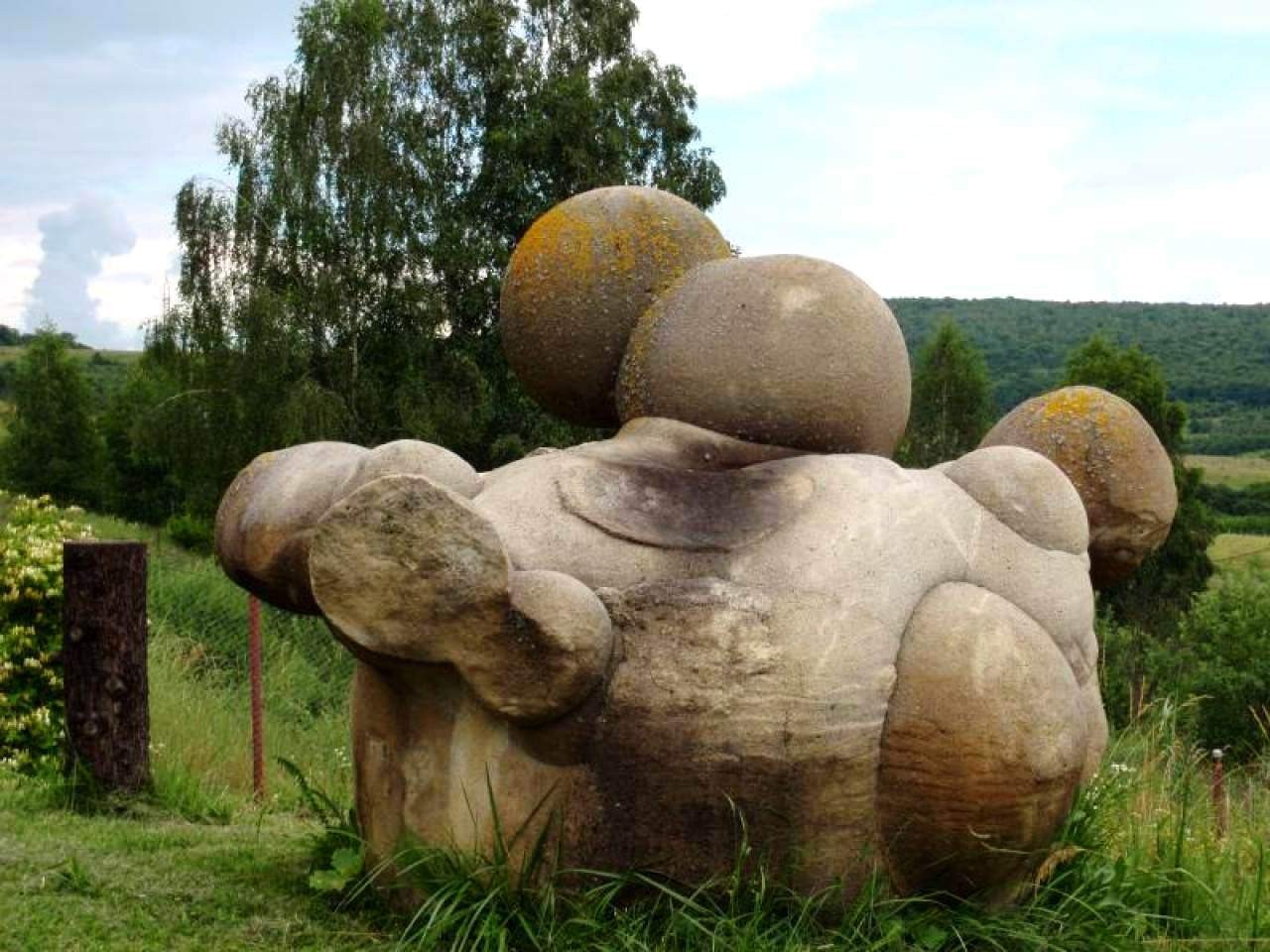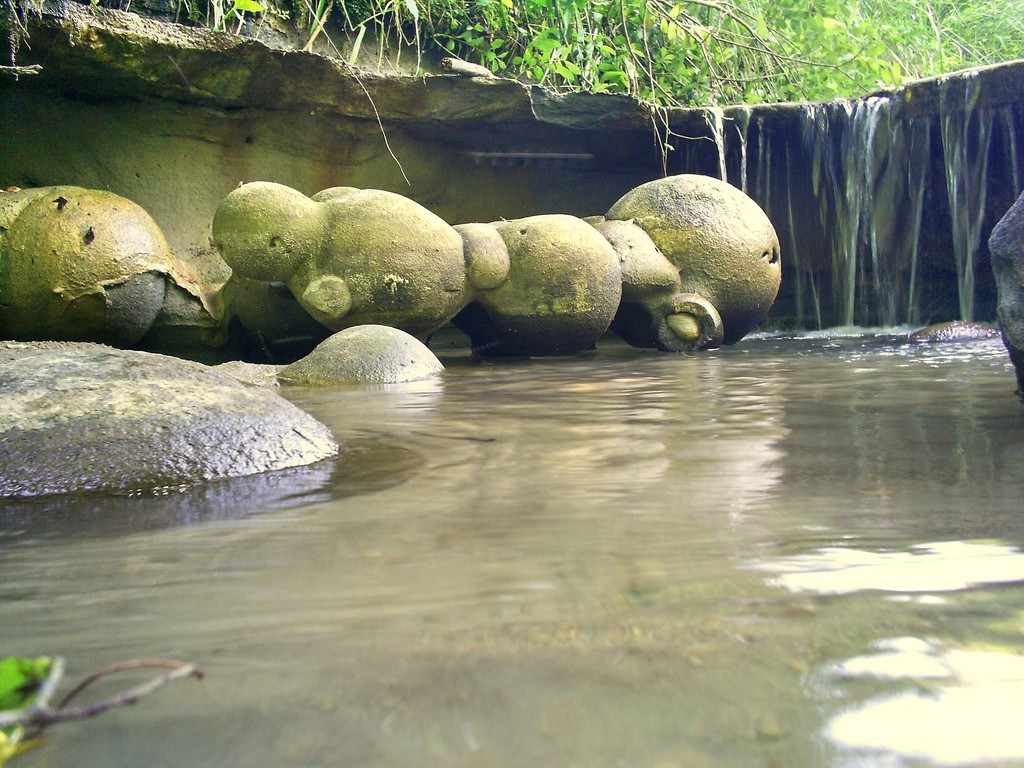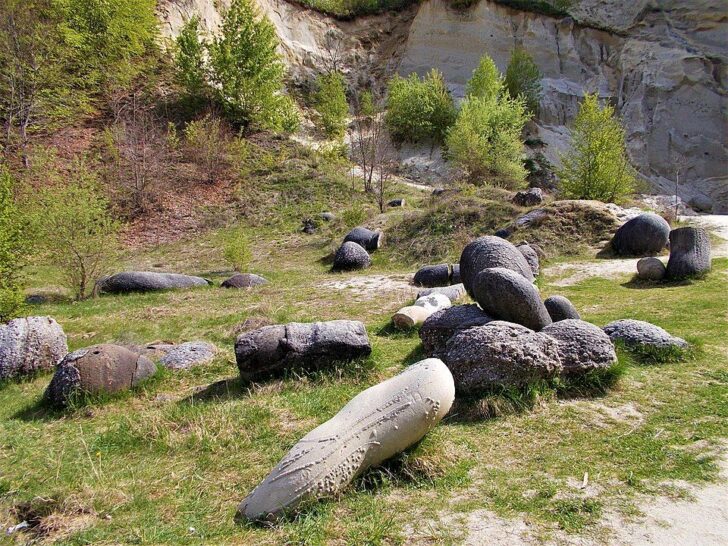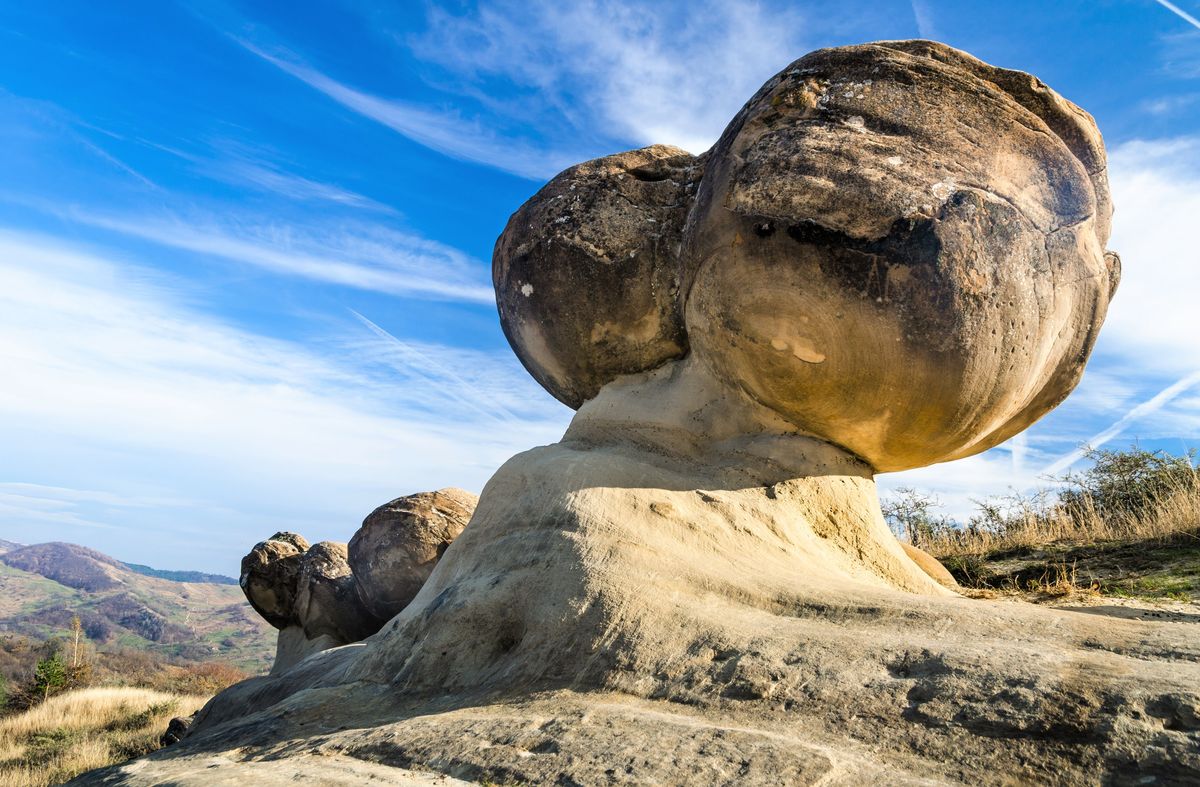As we’ve recorded countless times on our journey here on Earth, nature never fails to surprise us with its unusual occurrences. Romania is a prime example of this phenomenon with its remarkable rocks known as trovants. These rocks have the ability to grow, shift, and even reproduce, resulting in breathtaking formations.

Costesti, a quaint town in Romania, is known for its peculiar geological wonders – the growing stones. These bulbous boulders have fascinated the locals for ages and have even inspired myths about their ability to move and grow like living beings. However, these legends hold some truth to them.
Experts speculate that the irregular spheroid shapes of these stones were formed due to the prolonged and intense seismic activity during the Middle Miocene. The mighty earthquakes generated shockwaves that compacted sandy sediments and concentrated limestone cement into spherical lumps. Over time, the loose sandstone around these lumps eroded away, revealing the denser trovants inside. Interestingly, not all of the hundreds of known trovants were discovered until the surrounding sand was quarried away.
But what causes these rocks to grow, move, and multiply?

Trovants are unique formations that consist of a solid stone core and sand or gravel surrounding it. These structures can only be found in areas with highly-porous sand deposits and sandstone that has been cemented by calcium carbonate-rich water. The presence of calcium carbonate is crucial in the formation of trovants, as it helps the rock grow with the help of rainwater. After each heavy rainfall, trovants absorb the minerals from the rain, which combine with the chemicals already present in the rock. This chemical reaction creates pressure inside the trovant, causing the stone to grow from the center to its edges and multiply at a rate of approximately 4-5 cm per millennium.

Trovants are fascinating stones that come in a variety of shapes, including cylindrical, spherical, and nodular. They owe their irregular shapes to the secretion of cement, which causes them to grow and develop in unpredictable ways. Trovants can range in size from just a few millimeters to as large as 10 meters. What sets these stones apart from others is their ability to move from one place to another. Additionally, they have root-like extensions and age rings that are visible when you cut them open. Despite all we know about these unique features, science still has yet to fully explain them.

The trovants found in Valcea County, Romania are a fascinating sight to behold. They possess qualities of both plants and rocks, which makes it difficult to classify them as living or non-living. Despite this ambiguity, these stones that grow can be considered a natural wonder and a must-see attraction for visitors to the area. Their majestic appearance is truly a sight to behold.







